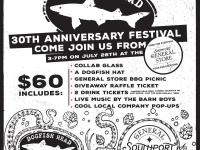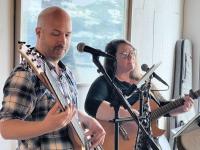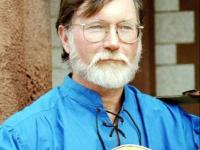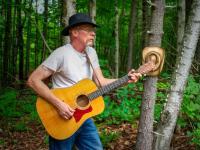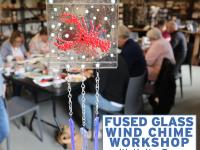Potato Chip Birds and the Great Backyard Bird Count
 A recent uptick in the number of “potato chip birds” (aka, American goldfinches) at our feeders got us excited about what the Great Backyard Bird Count (February 14-17) might reveal. Image of American goldfinches from Maine’s Favorite Birds, by Jeff and Allison Wells. https://www.amazon.com/Maines-Favorite-Birds-Jeffrey-Wells/dp/0884483363
A recent uptick in the number of “potato chip birds” (aka, American goldfinches) at our feeders got us excited about what the Great Backyard Bird Count (February 14-17) might reveal. Image of American goldfinches from Maine’s Favorite Birds, by Jeff and Allison Wells. https://www.amazon.com/Maines-Favorite-Birds-Jeffrey-Wells/dp/0884483363
 A recent uptick in the number of “potato chip birds” (aka, American goldfinches) at our feeders got us excited about what the Great Backyard Bird Count (February 14-17) might reveal. Image of American goldfinches from Maine’s Favorite Birds, by Jeff and Allison Wells. https://www.amazon.com/Maines-Favorite-Birds-Jeffrey-Wells/dp/0884483363
A recent uptick in the number of “potato chip birds” (aka, American goldfinches) at our feeders got us excited about what the Great Backyard Bird Count (February 14-17) might reveal. Image of American goldfinches from Maine’s Favorite Birds, by Jeff and Allison Wells. https://www.amazon.com/Maines-Favorite-Birds-Jeffrey-Wells/dp/0884483363
We had a sudden influx of potato chip birds over the weekend. By “potato chip birds” we mean American goldfinches. We gave them the affectionate nickname because, when they fly, they make a call that sounds like “potato chip.” They’re also golden colored like a potato chip, but that’s just a bonus, not the real reason.
All that is to say, we recently saw a jump at our feeders in our goldfinch count. It went from less than five all winter to more than 30 in recent days. We wondered if the surge was part of a broad trend across Maine or even across the northeastern states. Are goldfinches on the move in some kind of a later winter northward movement? Or were the goldfinches we saw just indicative of some local movements of a flock wandering around in search of new food sources?
Those kinds of questions are generally impossible to answer based on one’s lone bird sightings from a single location. But if thousands, perhaps even hundreds of thousands, of us pool our sightings from across the state, the nation, and the world—well, suddenly the possibilities for understanding what and how birds are doing become amazing.
That’s the premise of the Great Backyard Bird Count, taking place this year from Friday, February 14 (Valentine’s Day—how appropriate!) through Monday, February 17. It’s hard to believe the count is now in its 22nd year, especially since we were part of the Cornell Lab of Ornithology and National Audubon team that started and promoted the event through its early years, as we recounted in a previous column.
Last year, more than 200,000 checklists were submitted from more than 100 countries around the world. Together, all of these people documented more than 6,800 different bird species! That’s more than half of all the bird species known in the world. The U.S. led the pack in total number of checklists submitted, with an incredible 136,000, but it was fascinating to see that bird lovers in India submitted over 21,000 in 2019. And it was gratifying to learn that at least three nations (Mexico, Costa Rica, and Colombia) that harbor our wintering birds saw the number of checklist submissions go over 1,000.
All of that means that the number of people interested in and wanting to do something to help birds is growing, fast.
The Great Backyard Bird Count is designed to be one of the easiest ways for people who are new to learning about birds to begin doing an activity to help birds. To participate you just watch and count the birds you see somewhere, anywhere. It can be in your backyard, park, work place, school—wherever you are, just count the birds you see. Then you set up a free eBird account and follow super-simple instructions to submit your list of the species you saw and how many of each.
The real fun starts after that as you watch the growing online tally showing the numbers of fellow counters submitting checklists and see what birds they are finding. There’s also a bird photo contest for those so inclined.
We hope all of you will consider submitting at least one checklist (and maybe more) in this year’s upcoming Great Backyard Bird Count. We want Maine to make a great showing—great fun, and good for the birds! Find out more and get set up with your free eBird account here: https://gbbc.birdcount.org/
Jeffrey V. Wells, Ph.D., is a Fellow of the Cornell Lab of Ornithology and Vice President of Boreal Conservation for National Audubon. Dr. Wells is one of the nation's leading bird experts and conservation biologists and author of “Birder’s Conservation Handbook”. His grandfather, the late John Chase, was a columnist for the Boothbay Register for many years. Allison Childs Wells, formerly of the Cornell Lab of Ornithology, is a senior director at the Natural Resources Council of Maine, a nonprofit membership organization working statewide to protect the nature of Maine. Both are widely published natural history writers and are the authors of the book, “Maine’s Favorite Birds” and “Birds of Aruba, Bonaire, and Curaçao: A Site and Field Guide” from Cornell Press.
Event Date
Address
United States













